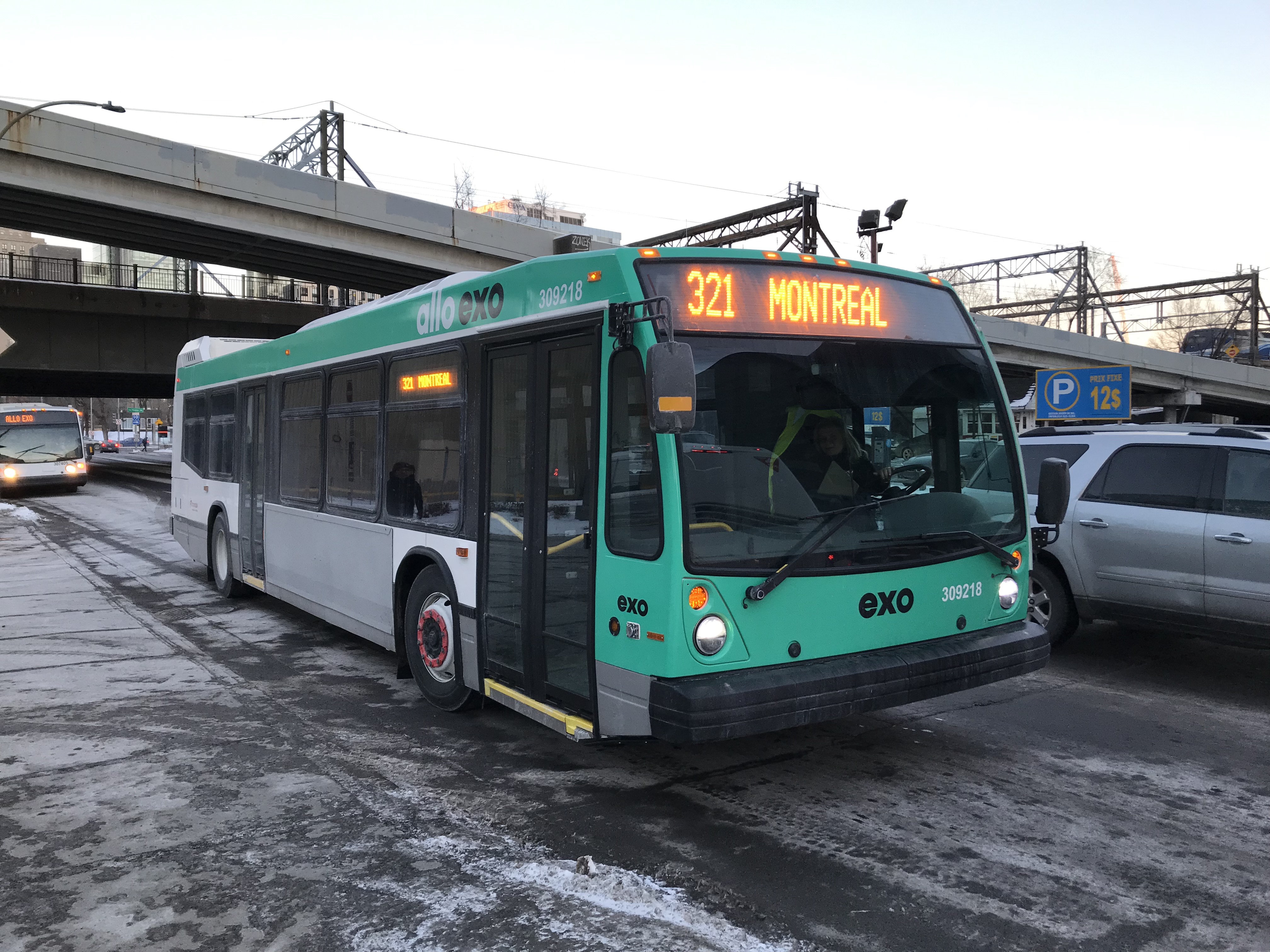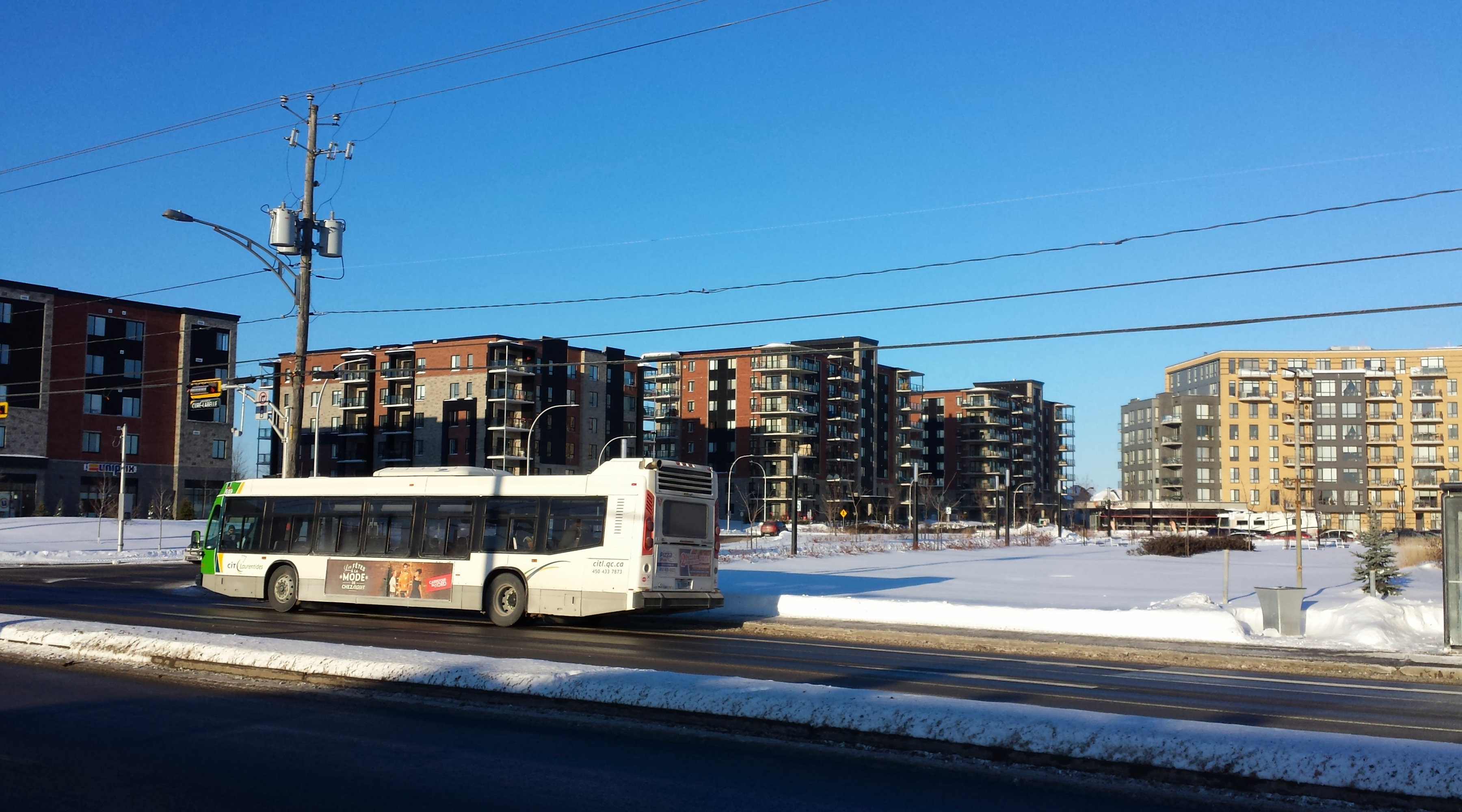|
Exo (public Transit)
Exo, stylized as exo and officially known as the (, RTM; ), is a public transport, public transport system in Greater Montreal, including the Island of Montreal, Laval, Quebec, Laval (Île Jésus), and communities along both the North Shore (Laval), North Shore of the Rivière des Mille-Îles, Mille-Îles River and the South Shore (Montreal), South Shore of the St. Lawrence River. It was created on June 1, 2017, taking over Montreal's commuter rail services from the former as well as bus and paratransit services from the various suburban municipal and intermunicipal transit agencies. Exo operates the second busiest such system in Canada after Toronto's GO Transit. Exo's territory is concurrent with Montreal Metropolitan Community limits, with the addition of the Kahnawake First Nations reserve and the city of Saint-Jérôme, Quebec, Saint-Jérôme. It serves a population of approximately 4 million people who make more than 174,000 trips daily in the area radiating from Montre ... [...More Info...] [...Related Items...] OR: [Wikipedia] [Google] [Baidu] |
Mont-Saint-Hilaire Line
Mont-Saint-Hilaire (also designated line 13) is a commuter rail service in Greater Montreal, Quebec. It is operated by Exo (public transit), Exo, the operator of public transport services across this region. The Mont-Saint-Hilaire line was operated by the Grand Trunk Railway (GTR) from 1859 to 1923, and by Canadian National Railway (CN) from 1923 to 1988, following the GTR's merger into CN. There was no commuter train service on the line after 1988 until Exo's predecessor agency, the Agence Métropolitaine de transport (AMT), resumed passenger service in 2000. There are 7 inbound and 7 outbound departures per weekday. This line does not run on weekends. Overview This line links the Central Station (Montreal), Central Station in downtown Montreal with Mont-Saint-Hilaire station, Mont-Saint-Hilaire, on Montreal's South Shore (Montreal), South Shore. The line offers seven departures every weekday morning towards Montreal and seven returns to Saint-Hilaire every weekday evening. ... [...More Info...] [...Related Items...] OR: [Wikipedia] [Google] [Baidu] |
GO Transit
GO Transit is a regional public transit system serving the Greater Golden Horseshoe region of Ontario, Canada. With its hub at Union Station in Toronto, GO Transit's green-and-white trains and buses serve a population of more than seven million across an area over stretching from Kitchener in the west to Peterborough in the east, and from Barrie in the north to Niagara Falls in the south. In , the system had a ridership of . GO Transit operates diesel-powered double-decker trains and coach buses, on routes that connect with all local and some long-distance inter-city transit services in its service area. GO Transit began regular passenger service on May 23, 1967, as a part of the Ontario Ministry of Transportation. Since then, it has grown from a single train line to seven lines. GO Transit has been constituted in a variety of public-sector configurations. Today, it is an operating division of Metrolinx, a provincial Crown agency with overall responsibility for integr ... [...More Info...] [...Related Items...] OR: [Wikipedia] [Google] [Baidu] |
North Shore (Montreal)
The North Shore () is the general term for the northern suburbs of Montreal. The North Shore is located in southwestern Quebec on the northern shore Rivière des Mille Îles, opposite the Île Jésus (the city of Laval). It consists of twenty municipalities that belong to the Laurentides and Lanaudière administrative regions. While the city of Laval is commonly associated with the North Shore, it is not considered part of the North Shore because of its status as an island. Included Municipalities Laurentians * Blainville * Bois-des-Filion *Boisbriand * Deux-Montagnes *Lorraine * Mirabel * Oka * Pointe-Calumet * Rosemère * Saint-Eustache * Saint-Joseph-du-Lac * Sainte-Anne-des-Plaines * Sainte-Marthe-sur-le-Lac * Sainte-Thérèse Lanaudière *Charlemagne * L'Assomption *Mascouche * Repentigny * Saint-Sulpice * Terrebonne *Joliette * Lavaltrie See also *List of crossings of the Rivière des Prairies * List of crossings of the Rivière des Mille Îles * Off-island subu ... [...More Info...] [...Related Items...] OR: [Wikipedia] [Google] [Baidu] |
Urban Agglomeration Of Longueuil
The urban agglomeration of Longueuil was created on January 1, 2006 as a result of the 2000–06 municipal reorganization in Quebec#Calls for de-amalgamation, de-amalgamation process brought upon by the Jean Charest, Charest government. It encompasses all the boroughs that were merged into the previous Longueuil, city of Longueuil and still retains the same area as that mega-city. The Urban agglomerations in Quebec, urban agglomeration of Longueuil is coextensive with the territory equivalent to a regional county municipality (TE) and Census geographic units of Canada, census division (CD) of Longueuil, whose geographical code is 58. In 2012, Longueuil mayor Caroline St-Hilaire proposed that the Urban agglomeration of Longueuil leave the Montérégie and become its own List of regions of Quebec, administrative region. History Longueuil Municipal reorganization in Quebec, merged on January 1, 2002 with the communities of Boucherville, Brossard, Greenfield Park, Quebec, Greenfield ... [...More Info...] [...Related Items...] OR: [Wikipedia] [Google] [Baidu] |
Réseau De Transport De Longueuil
Réseau de transport de Longueuil (, RTL; ) is a public transit system in the city of Longueuil, Quebec, Canada, and nearby communities on the South Shore of Montreal. The RTL had an annual ridership of 34,447,686 in 2013. History RTL was officially inaugurated on July 1, 1974, as ''Commission de transport de la Rive-Sud de Montréal'' (''CTRSM''), replacing the former privately owned company ''Chambly Transport''. It served the former communities of Boucherville, Brossard, Greenfield Park, Quebec, Greenfield Park, Longueuil, LeMoyne, Quebec, LeMoyne, Saint-Hubert, Quebec, Saint-Hubert, Saint-Lambert, Quebec, Saint-Lambert and Notre-Dame-du-Sacré-Cœur, Quebec, Notre-Dame-du-Sacré-Cœur (later annexed to Brossard in 1978). From 1985 until 2002 it was named Société de transport de la Rive-Sud de Montréal (STRSM). Following the municipal reorganization in Quebec, municipal mergers in 2002, the name officially changed to Société de transport de Longueuil. Its marketing nam ... [...More Info...] [...Related Items...] OR: [Wikipedia] [Google] [Baidu] |
Société De Transport De Laval
Société de transport de Laval (, STL) is the public transit system in the city of Laval, Quebec, Canada. History The STL was founded in June 1971 as the ''Commission de transport de la Ville de Laval (CTL)''. It later changed its name in 1985 to the ''Société de transport de la Ville de Laval'', until changing to its current name in 2001. In 2009 and 2010, a proposal to convert some of STL's most heavily used routes to trolleybus, electric trolleybuses was studied in detail, funded jointly by STL and Hydro-Québec, but in the fourth quarter of 2010, STL decided to postpone making a decision on trolleybuses until at least 2011, to allow further study of rechargeable electric buses first. Routes Serving the growing suburban areas of Laval, Quebec, Laval and the north of Montreal, the STL runs 44 routes, including the former Réseau de transport métropolitain, AMT's, now STL's 902 Express Route in Laval. Most bus routes end at metro stations Cartier station (Montreal Metro), C ... [...More Info...] [...Related Items...] OR: [Wikipedia] [Google] [Baidu] |
Société De Transport De Montréal
The Société de transport de Montréal (, STM; ) is a public transport agency that operates transit bus and rapid transit services in the urban agglomeration of Montreal, Quebec, Canada. Established in 1861 as the "Montreal City Passenger Railway Company", it has grown to comprise Montreal Metro, four subway lines with a total of List of Montreal Metro stations, 68 stations, as well as 212 List of Montreal bus routes, bus routes and 23 List of Montreal bus routes#Night Routes, night routes. The STM was created in 2002 to replace the Société de transport de la communauté urbaine de Montréal (STCUM; ). The STM operates the second most heavily used urban mass transit system in Canada, and one of the most heavily used rapid transit systems in List of North American rapid transit systems by ridership, North America. the average daily ridership is 1,745,700 passengers: 686,30 by bus, 1,0463,500 by rapid transit and 13,100 by paratransit service. [...More Info...] [...Related Items...] OR: [Wikipedia] [Google] [Baidu] |
Autorité Régionale De Transport Métropolitain
The Autorité régionale de transport métropolitain (ARTM; ) is a transportation authority that plans, finances and integrates public transport in Greater Montreal in Quebec, Canada. The organization was created by the Government of Quebec on June 1, 2017, replacing the former planning mandate of the Agence métropolitaine de transport (AMT). It has assumed other key initiatives including Opus card operation and multiple other projects supporting transit. History Attempts at planning, coordinating, operating and integrating regional public transit in the Greater Montreal area have been made since 1970, with the mandates from different levels of government, including: (BTM), accountable to the Montreal Urban Community; (BAREM, unrelated to the current REM); (COTREM), manated by the Quebec Ministry of Transportation (MTQ), the (CMTC), created by an Act of the National Assembly and; Divisions of the MTQ itself. Following the publishing of the Pichette Report on governance o ... [...More Info...] [...Related Items...] OR: [Wikipedia] [Google] [Baidu] |
Société De Transport De Montréal
The Société de transport de Montréal (, STM; ) is a public transport agency that operates transit bus and rapid transit services in the urban agglomeration of Montreal, Quebec, Canada. Established in 1861 as the "Montreal City Passenger Railway Company", it has grown to comprise Montreal Metro, four subway lines with a total of List of Montreal Metro stations, 68 stations, as well as 212 List of Montreal bus routes, bus routes and 23 List of Montreal bus routes#Night Routes, night routes. The STM was created in 2002 to replace the Société de transport de la communauté urbaine de Montréal (STCUM; ). The STM operates the second most heavily used urban mass transit system in Canada, and one of the most heavily used rapid transit systems in List of North American rapid transit systems by ridership, North America. the average daily ridership is 1,745,700 passengers: 686,30 by bus, 1,0463,500 by rapid transit and 13,100 by paratransit service. [...More Info...] [...Related Items...] OR: [Wikipedia] [Google] [Baidu] |
Government Of Quebec
The Government of Quebec (, ) is the body responsible for the administration of the Provinces and territories of Canada, Canadian province of Quebec. The term is typically used to refer to the executive of the day (i.e. Minister of the Crown, ministers of the Crown) and the non-political staff within each provincial department or agency whom the ministers direct. By virtue of French language, French being the province's official language, the government Federal Identity Program, corporately brands itself as the Gouvernement du Québec. The current construct was established when the province joined Canadian Confederation, Confederation in 1867. Quebec is a Federated state, constituent state of Canada, a constitutional monarchy with a parliamentary democracy in the Westminster system, Westminster tradition; a Premier of Quebec, Premier—presently François Legault of the Coalition Avenir Québec—is the head of government and is invited by the Crown to form a government after secur ... [...More Info...] [...Related Items...] OR: [Wikipedia] [Google] [Baidu] |



